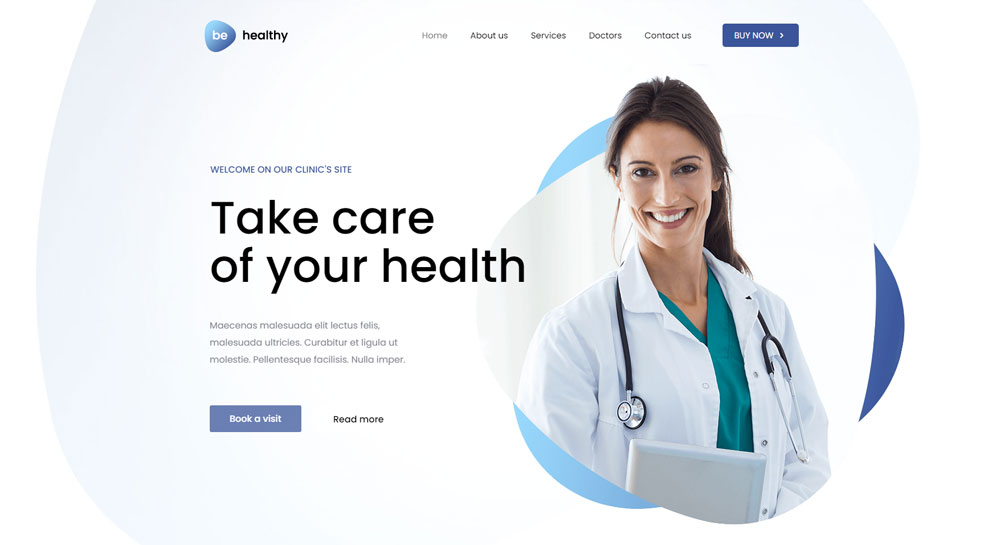Hey there, fellow doctors and medical practitioners! As you know, having a great website is essential for any medical practice. It’s where patients can find important information about your practice, like your location, hours, and services. It’s also a place where patients can get to know you and your team a little bit better. But with so much on your plate, how do you even begin to create a website? Don’t worry, we’ve got you covered. We’ve put together this in-depth guide to web design and development best practices specifically for doctors and medical practices. And because we know you’ve got a sense of humour, we’ve thrown in a few jokes to keep things light.
Why Every Doctor Needs a Website
In this digital age, patients expect to be able to find information about your practice online, and a professional website is a key way to connect with them. According to recent stats, 63% of patients use a practice’s website to learn about its services, and 72% of patients expect to be able to book appointments online. With numbers like that, it’s clear that having a professional website is more important than ever. Let’s take a deep dive into the importance of a website for doctors and medical practices.
Increase Patient Engagement
Having a website for your medical practice can help increase patient engagement by providing a place for patients to learn about your services, contact you with questions, and even book appointments online. This convenience can help improve the patient experience and make it more likely that they will return to your practice in the future.
Improve Visibility and Reach
A website can also help improve your practice’s visibility and reach. By optimising your website for search engines, potential patients in your local area and beyond can easily find your practice when searching for healthcare services online.
Local SEO
Optimising your website for local SEO can help increase your visibility to potential patients in your area. This includes including your practice’s name, address, and phone number (NAP) on your website, as well as obtaining local citations and reviews.
Content Marketing
Incorporating a blog or news section on your website can also help improve your reach through content marketing. By regularly publishing relevant and informative content, you can attract potential patients to your website and establish your practice as a trusted source of information in your industry.
Establish Credibility and Trust
Having a professional website can also help establish credibility and trust with potential patients. A well-designed website that accurately represents your practice and includes information about your team, services, and patient reviews can help build trust and confidence in your practice.
10 Web Design & Development Best Practices for Doctors / Medical Practices
1. Define your target audience
Before you start building your website, it’s important to think about who you are trying to reach. Are you targeting potential patients in your local area, or are you looking to attract patients from further afield? Understanding your target audience will help you create a website that speaks to their needs and interests.
2. Choose a clean and simple design
When it comes to web design, less is often more. A clean and simple design will make it easier for your visitors to find the information they need and navigate your website. Avoid cluttered layouts and flashy graphics, as they can be overwhelming and distract from the main content of your website. Instead, focus on creating a clear hierarchy of information and using clean lines and uncluttered design elements.
3. Use professional photos
First impressions count, and the photos on your website are the first thing your visitors will see. Make sure to use high-quality, professional photos that accurately represent your practice. And please, no selfies in the exam room – that’s just awkward.
4. Don’t forget about SEO
SEO, or search engine optimisation, is the process of improving your website’s visibility on search engines like Google. This is important because it helps your website rank higher in search results, which makes it more likely that potential patients will find you. Make sure to include relevant keywords in your website’s content and use header tags to highlight important information.
5. Make sure your website is mobile-friendly
More and more people are accessing the internet on their phones, so it’s essential that your website is easy to use on a small screen. Make sure your website is responsive and easy to navigate on a phone or tablet.
6. Use clear headings and subheadings
Your website should be easy to scan, and clear headings and subheadings will help your visitors find the information they need quickly.
7. Include patient reviews
Word-of-mouth is still one of the most powerful marketing tools, and patient reviews can be a great way to showcase your practice. Just make sure to get permission before publishing any reviews on your website.
8. Make it easy for patients to contact you
Your website should have a clear and easy-to-find contact page with all of your practice’s information, including your phone number, email, and address. Consider including a contact form so that patients can easily get in touch with you.
9. Update your website regularly
Keep your website fresh and up-to-date with new content and information. This not only helps with SEO, but it also shows patients that your practice is active and engaged. Consider adding a blog or news section to your website where you can share updates and information about your practice.
10. Test your website
Before you launch your website, it’s important to test it to make sure everything is working properly. This includes checking for broken links, ensuring that all forms and buttons are functioning, and testing the website on different devices and browsers.
Web Design for Doctors: A Summary
We hope these tips have been helpful! Building a website may seem daunting, but with a little bit of effort, you can create a website that accurately represents your practice and helps you connect with patients.
And remember, if all else fails, you can always hire a professional web designer. They’ll do all the hard work for you and you can get back to what you do best – taking care of your patients.
Good luck, and happy designing!
Expert Web Design and Development Services for Doctors & Medical Practices
Attention Doctors and Medical Practitioners! In need of a professional website to represent your practice and connect with patients? Look no further! Our team at Top4 Marketing, an experienced web design and development agency, has over 23 years of experience in the industry and is here to help. We specialise in creating websites for the medical industry, and our team understands the unique needs and challenges that come with it. Let us handle it for you so you can focus on what you do best – taking care of your patients. Contact us today to learn more and get started on your new website.


 SAUDI ARABIA
SAUDI ARABIA

























